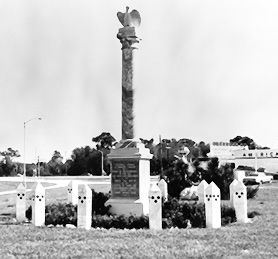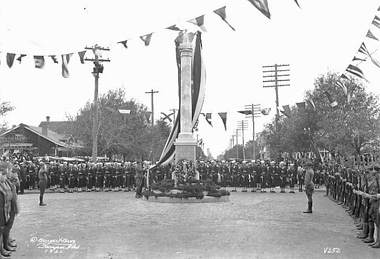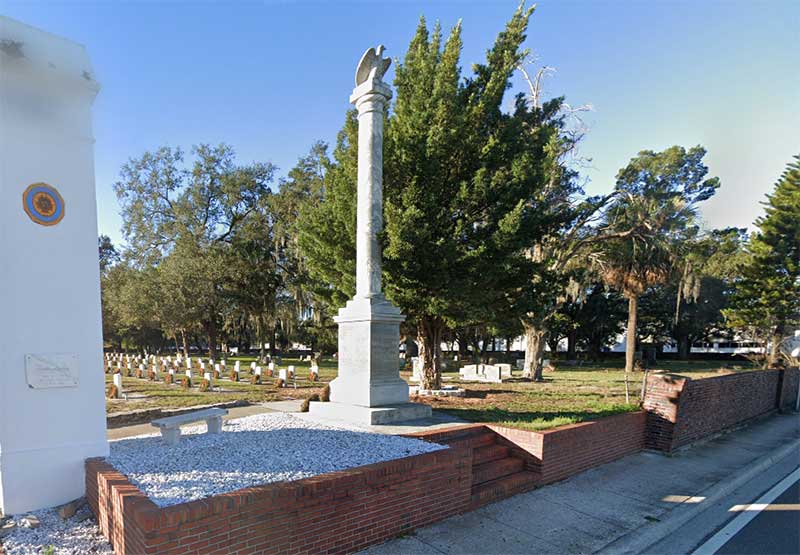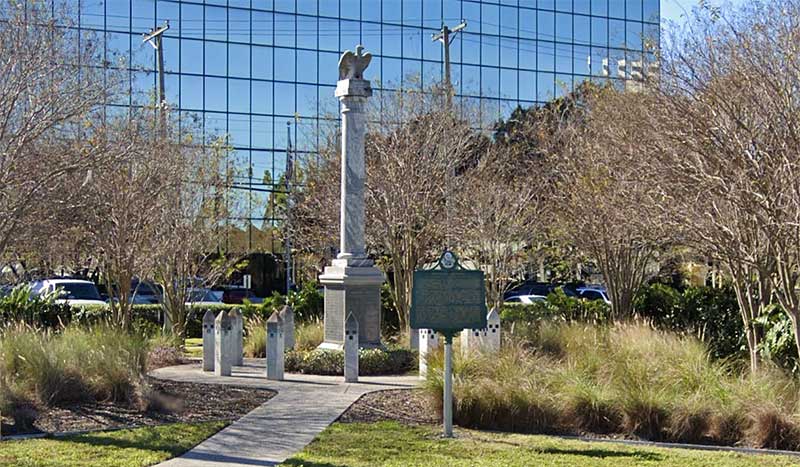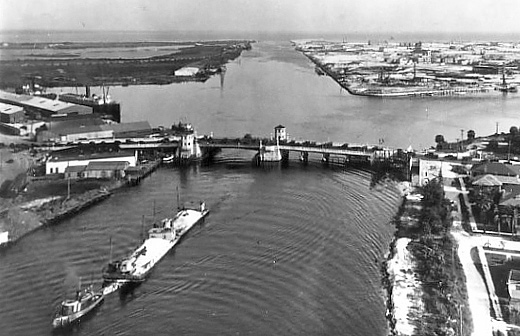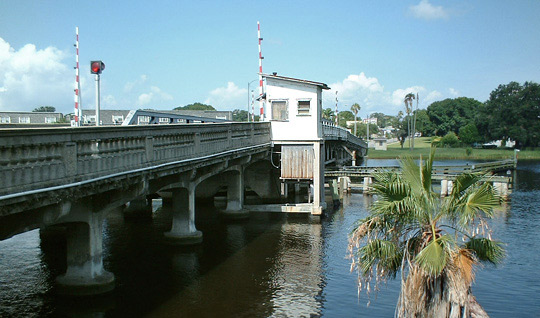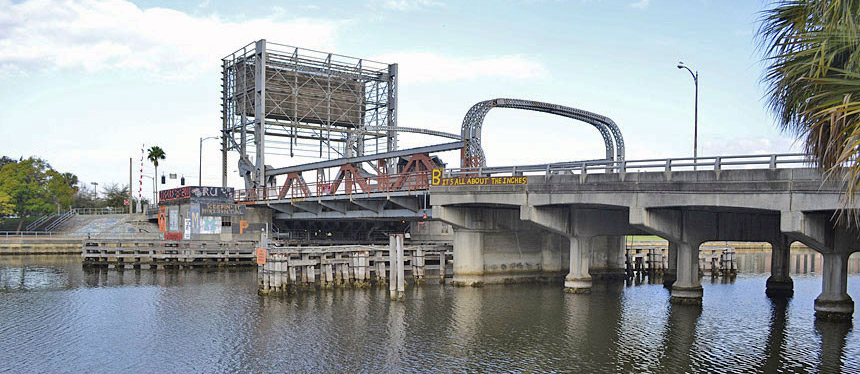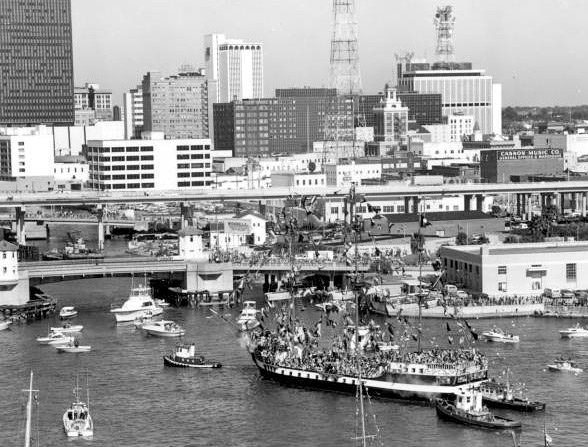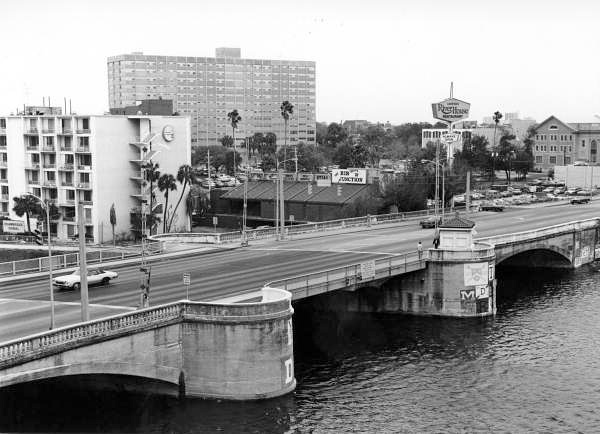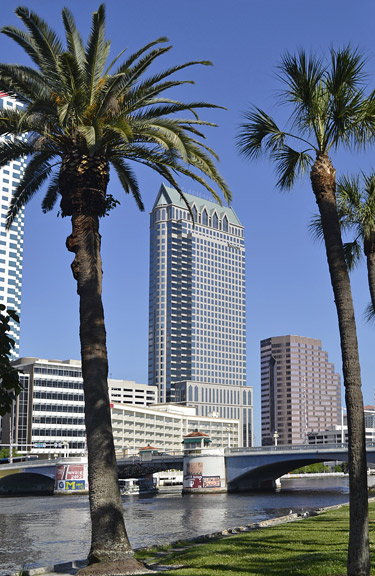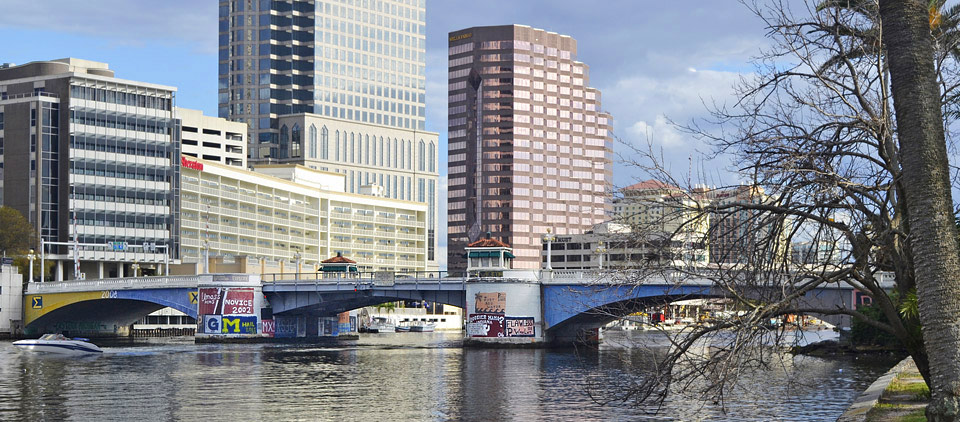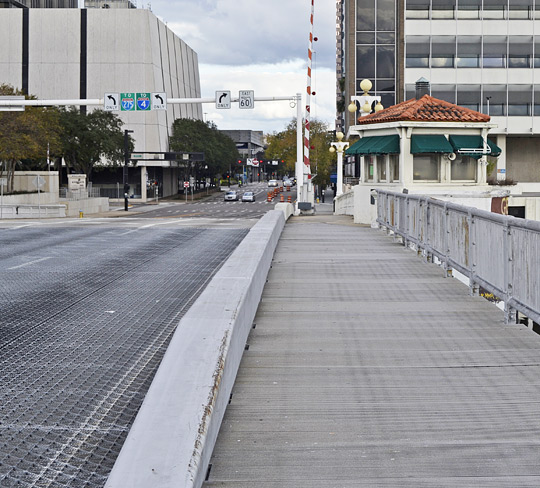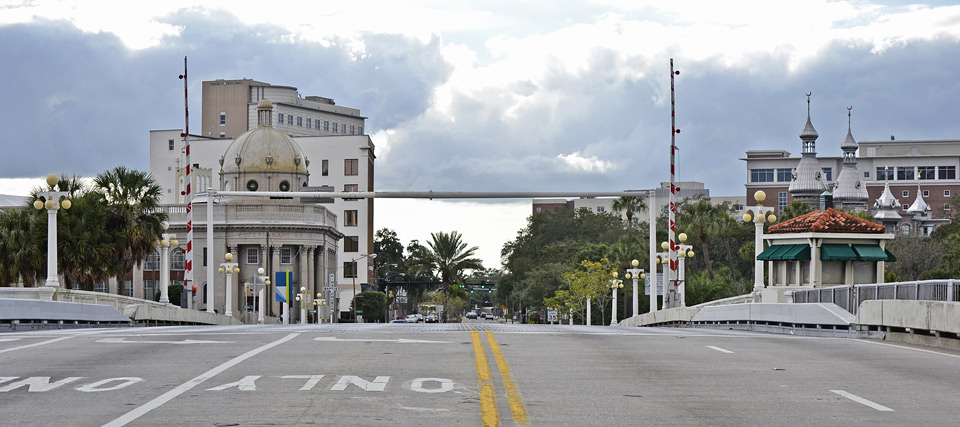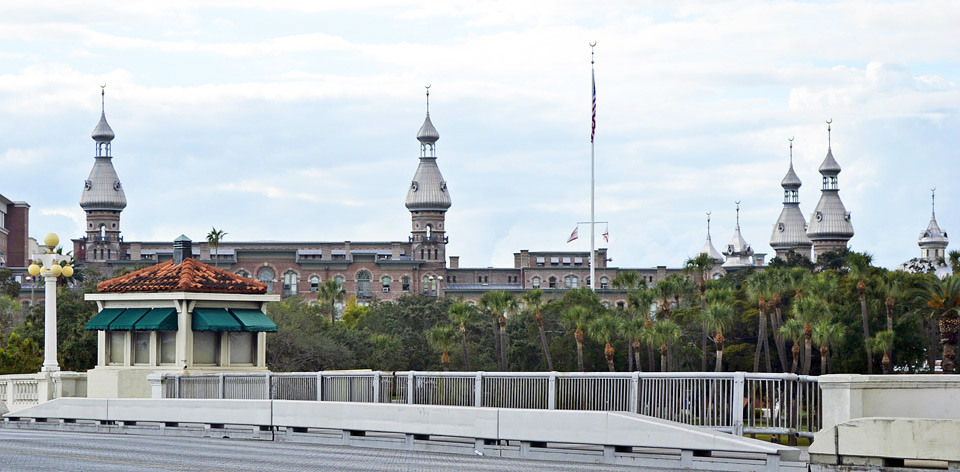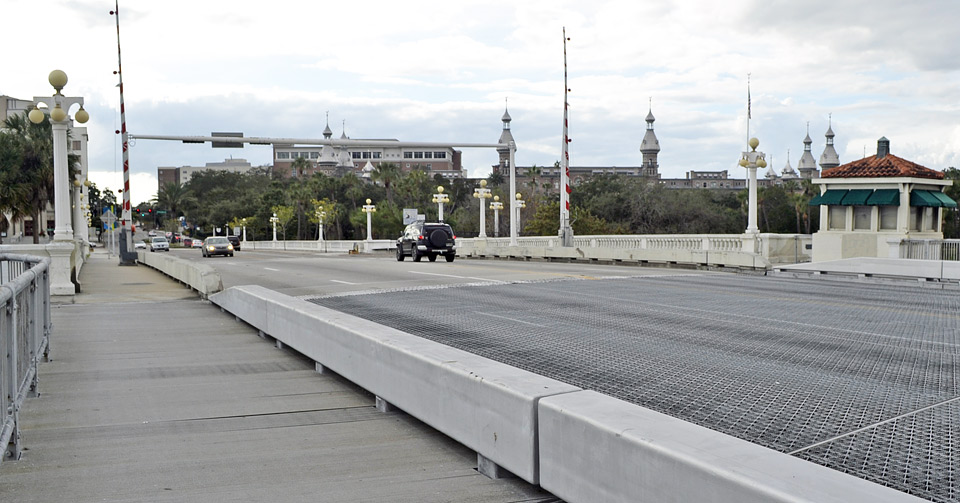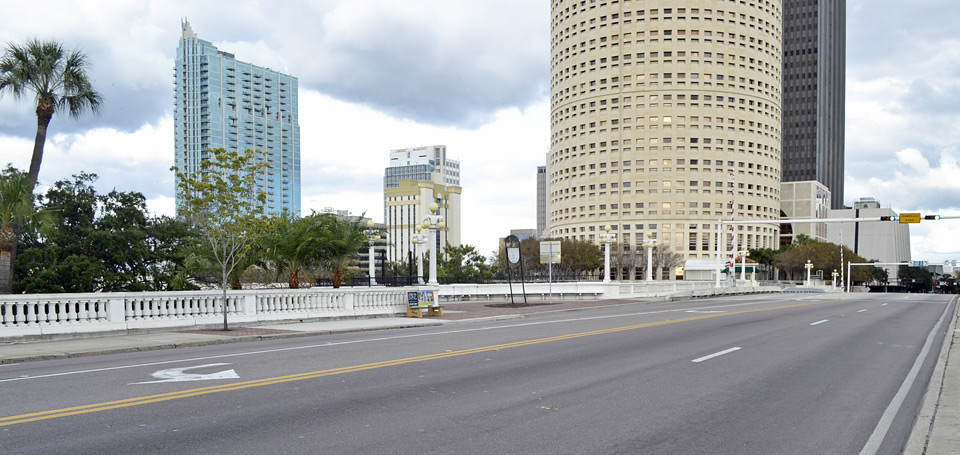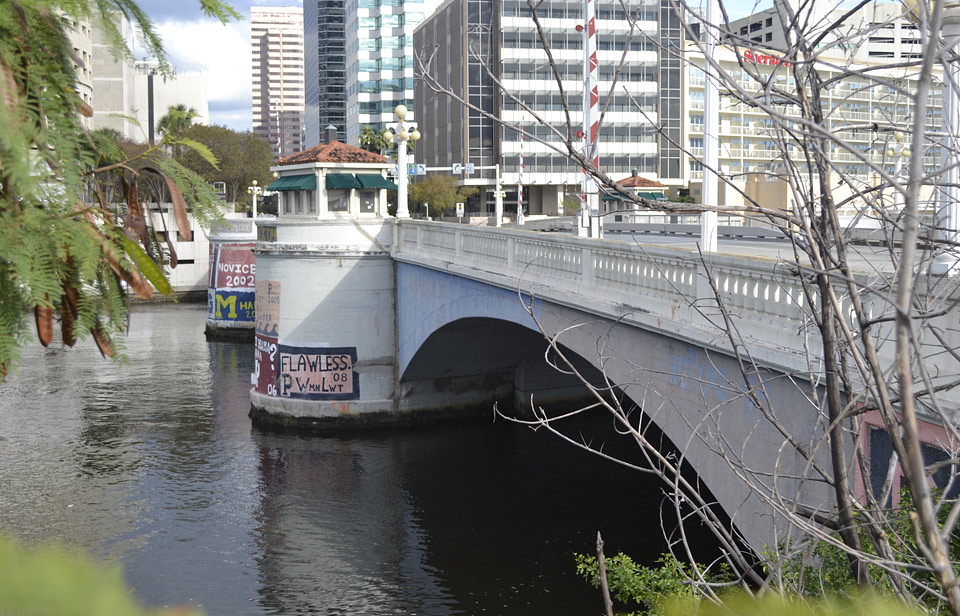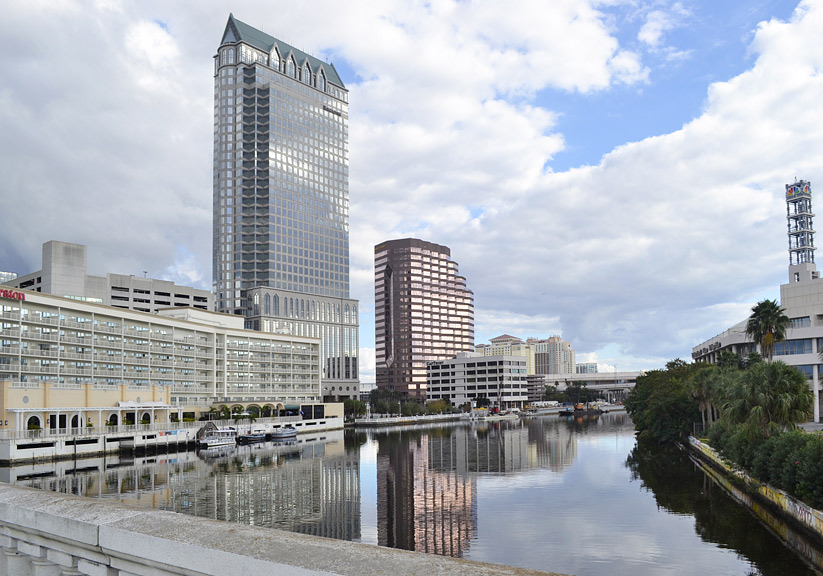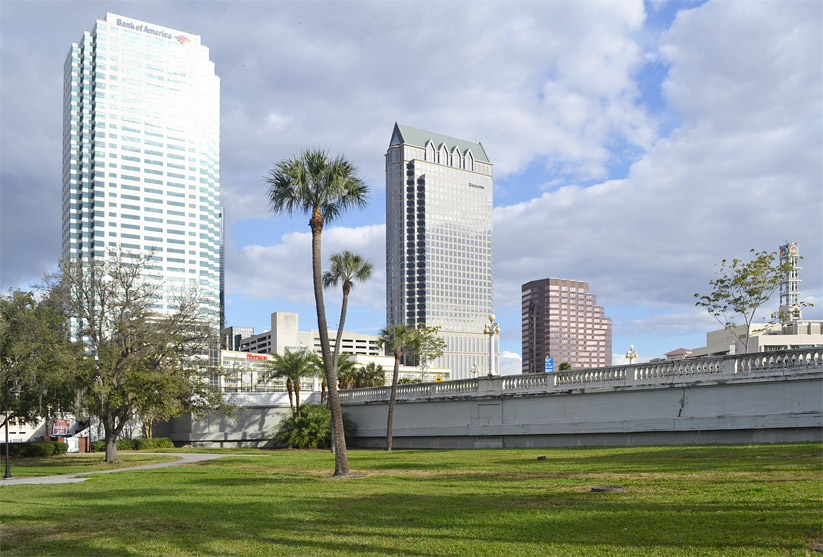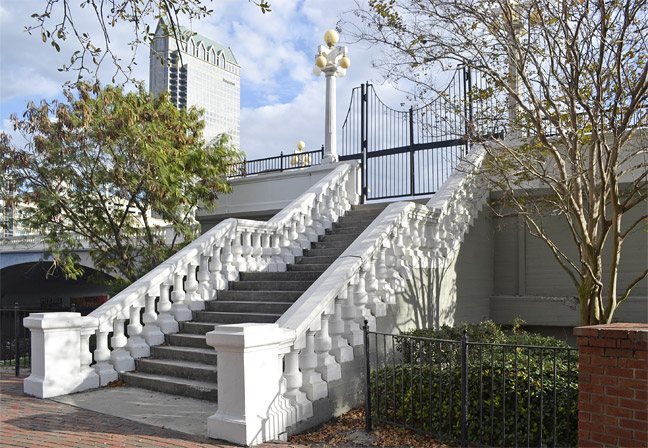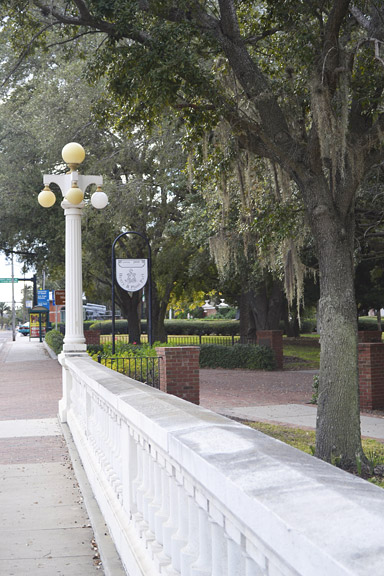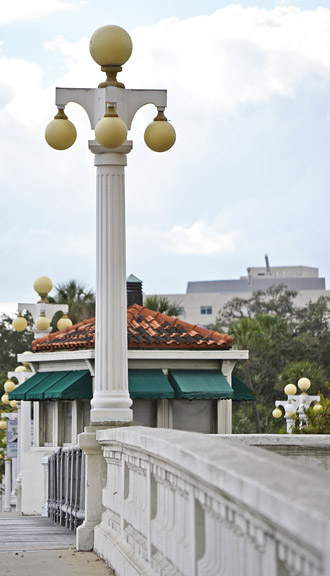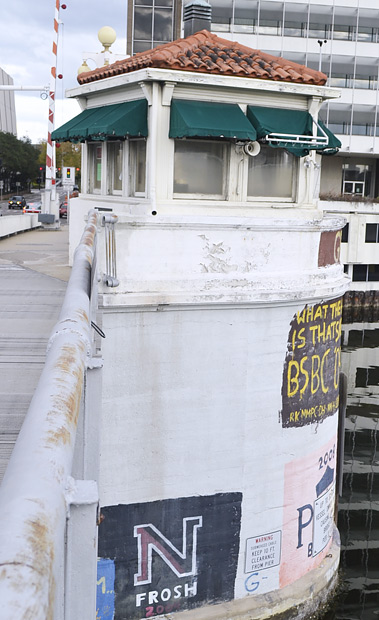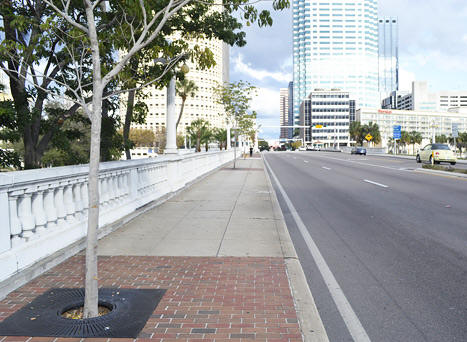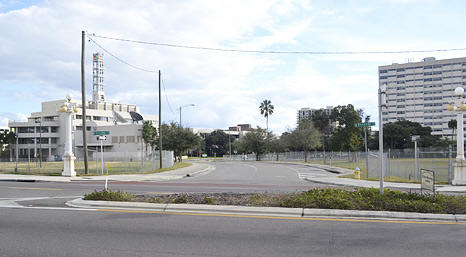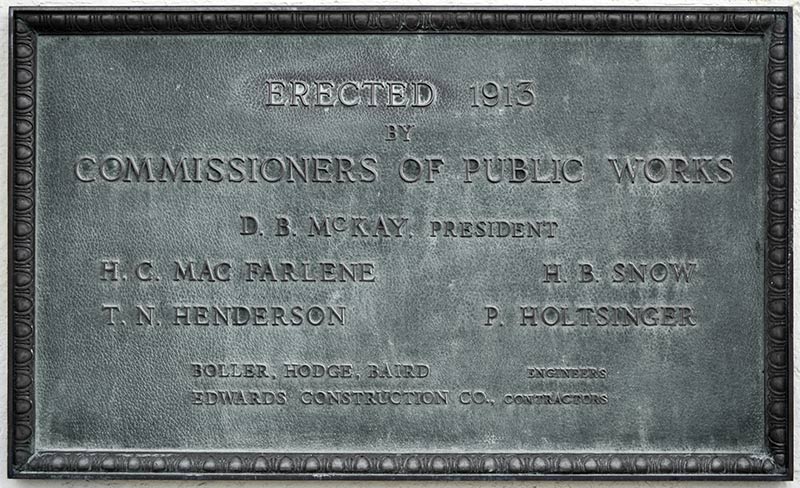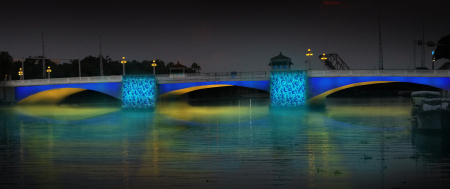|
|
The Lafayette
Street Bridge -
Part 4 of 4 |
 |
| The End of the Streetcars | |
|
Tampa continued to grow
throughout the twentieth century, and while many new bridges were built
across the Hillsborough River, eventually the passage of time and
thousands of vehicles each day left their mark on the Lafayette Street
Bridge. TECO stopped operating streetcars in 1947, and removed the last
streetcar tracks in Tampa from the Lafayette Street Bridge in 1969.
The caption reads: Take a good look at these Tampa streetcars. You won't see them after today. They will be replaced tomorrow with buses, ending more than half a century of service on Tampa streets. The cars go into the barn tonight to be sold to Central and South American countries to spend their last days "south of the border." The USF Special Collections On-line library has an excellent article on the history of streetcars in Tampa and St. Pete. This article shows the retirement date of the streetcars as 1949, but the Streetcar Society says 1946. It could be that from August 1946 to May 1949, the cars were gradually taken out of operation. Streetcars In Tampa and St. Petersburg, a Photographic Essay by Robert Lehman Visit Tampa Streetcar Fest to see Tampa's restored streetcars, here at Tampapix.
|
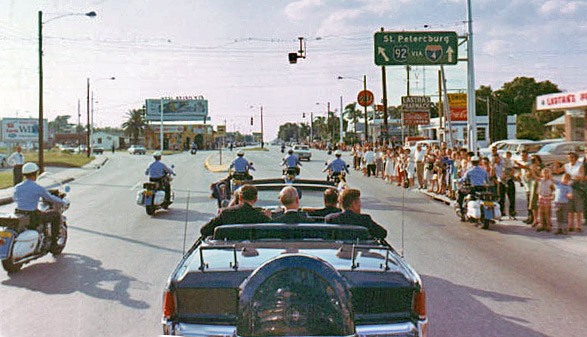
|
Lafayette and Grand Central Become Kennedy |
| Lafayette Street, along
with portions of Grand Central Avenue and Memorial Highway, was renamed
Kennedy Boulevard in December 1963, honoring assassinated President John
F. Kennedy, who had visited Tampa just a week before his death. When City
Engineer Wayne Jump was asked if the name of the bridge would change along
with the street, he replied “If the bridge were named the same as the
street before, it would seem it would follow suit now.” And so the
Lafayette Street Bridge became the Kennedy Boulevard Bridge. Nov. 18, 1963 - President Kennedy in his motorcade as it passes through the intersection of Grand Central and MacDill Avenue, headed west. The intersection ahead is Henderson Blvd.
|


